The scope of ge- netic engineering
Genetic engineering is the area of biotechnol- ogy concerned with the directed alteration of genetic material.
Biotechnology has already had countless appli- cations in industry, agriculture, and medicine. It is a hotbed* of research. The finishing of the human ge- nome project – a “rough draft” of the entire human genome was published in the year 2000 – was a sci- entific milestone** by anyone’s standards. Research is now shifting to decoding the functions and inter-
actions of all these different genes and to developing applications based on this information. The potential medical benefits are too many to list; researchers are working on every common disease, with varying de- grees of success. Progress takes place not only in the development of drugs and diagnostics but also in the creation of better tools and research methodologies, which in turn accelerates progress.
When considering what developments are likely over the long term, such improvements in the research process itself must be factored in***. The human ge- nome project was completed ahead of schedule (it usually takes ten years to get from proof-of-concept to successful commercialization).
Genetic therapies are of two sorts: somatic and germ-line. In somatic gene therapy, a virus is typically used as a vector to insert genetic material into the cells of the recipient's body. The effects of such inter- ventions do not carry over into the next generation. Germ-line genetic therapy is performed on sperm or egg cells, or on the early zygote, and can be inherit- able. Embryo screening, in which embryos are tested
extroversion, conscientiousness, physical appearance, etc. – involve genetic predispositions. Single-gene disorders, such as cystic fibrosis, sickle cell anemia, and Huntington's disease are likely to be among the first targets for genetic intervention. Polygenic traits and disorders, in which more than one gene is impli- cated, may follow later, although even polygenic con- ditions can sometimes be influenced in a beneficial direction by targeting a single gene.
Notes
*hotbed – a place where a lot of particular kind of activity happens.
**milestone – a very important event in the de- velopment of smth.
***to factor in – to include a particular thing in your calculations about how long something will take, how much it will cost etc.
Vocabulary
for genetic defects or other traits and then selectively implanted, can also count as a kind of germ-line inter- vention. Human gene therapy, except for some forms of embryo screening, is still experimental. Nonethe- less, it holds promise for the prevention and treatment of many diseases, as well as for uses in enhancement medicine.
The potential scope of genetic medicine is vast: virtually all disease and all human traits – intelligence,
accelerate (v) application benefit
carry over (v) common disease concern with (v) consider (v) decode (v) degree
diagnostic disease disorder drug embryo generation
genetic engineering germ-line therapy implicate (v)
improve (v) improvement inheritable insert (v) interaction intervention involve (v) list (v) predisposition prevention
screening shift (v)
somatic therapy sort
sort (v) target (v) therapy tool
trait virus
5) human /still experimental/ therapy /is /gene
6) involve /and /predispositions /all disease /all human traits /genetic
|
project recipient
zygote
1) Genetic engineering alteration of genetic material.
with the directed
2. Give Russian equivalents for the following words:
genetic engineering, genetic material, human genome, potential medical benefits, research meth- odologies, proof-of-concept, somatic gene therapy, recipient's body, germ-line genetic therapy, egg cells, zygote, embryo screening, enhancement medi- cine, potential scope of genetic medicine, single- gene disorders.
3. Put the words in the right order and write down the sentences:
1) is /biotechnology /research /of /a hotbed
2) different genes /and /research /of /decodes
/the functions /interactions
3) into /the effects /the next generation /do not carry over
4) are /genetic defects /embryos /tested for
2) Germ-line genetic therapy can be.
3) Human gene therapy, except for some forms of, is still experimental.
4) Research wants to decode the functions and
of all these different genes.
5) Genetic therapies are of two sorts: and.
6) Researchers are working on every with varying degrees of success.
7) Embryo screening testsfor genetic defects or other traits.
8) Single-gene disorders are the first targets for genetic.
5. Use your English-English dictionary and write down the definitions to the following words:
Decode, disorder,d iagnostic, predisposition, vi- rus, zygote.
6. Translate the following sentences paying at- tention to the words in italics.
1) Врачи выявили у пациента наследственное
предрасположение к серьезной болезни.
2) После осмотра больному была прописана музыкальная терапия.
3) Имеется много штаммов вируса гриппа
(flu).
4) Правительство должно ускорить реализа- цию программы приватизации.
5) После длительного лечения у пациента на- блюдалось значительное улучшение состояния здоровья.
6) В природе существует тесное взаимодей- ствие растительного и животного мира.
7) Они были на семейной встрече, на которой присутствовало три поколения; младшее из них было самым многочисленным.
8) Генная терапия человека, исключая неко- торые формы скрининга эмбрионов, до сих пор находится на экспериментальном уровне.
7. Answer to the questions according to the sense of the text.
1) What is genetic engineering?
2) Where does biotechnology have its applica- tions?
3) What is human genome project?
4) Is there any sense of genetic engineering for medicine?
5) How much time does it usually take to get from proof-of-concept to successful commercializa- tion? What about human genome project?
6) Genetic therapies are of two sorts, aren’t they? Can you name them?
7) What is somatic gene therapy?
8) What is the main idea, principle of germ-line genetic therapy?
9) What is the potential scope of genetic medi- cine?
10) How can polygenic conditions sometimes be influenced?
8. Make a plan of this text. Add it with the key- words.
9. Retell this text using your plan.
10.
|
11.  Translate the following one-rooted words: Industry – industrial – industrialism – industrialist – industrialize – industrious;
Translate the following one-rooted words: Industry – industrial – industrialism – industrialist – industrialize – industrious;
Apply - applicant - application;
Gene – genealogy – genetics – genome – genetic; Therapy – therapist – therapeutic – therapeutics; Intervene – intervention – intervening – intervention- ism.
12. Read the text and translate it.
The Human Genome Project.
Eyes of brown? or blue?… Curly hair? or straight?… Dimples?…Freckles? …
It’s in our genes. Heredity. Our mothers and fa- thers passed on all our traits when we were born. There are also many things in our genes that we would rather avoid, such as heart disease, diabetes, cancer, arthritis, muscular dystrophy, and other ill- nesses.
Many diseases come from alterations in our genes. To decipher our genetic code, a scientific journey has begun called The Human Genome Pro- ject. The genetic code is the complete instructions of all the genes that tell our body how to develop.
Over the years, some genes have been discovered for certain diseases. People who have a family his- tory of these diseases can be tested for the specific
gene. They will then know if they
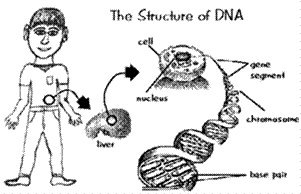 have this disease, even if no symptoms are pre-
have this disease, even if no symptoms are pre-
sent. But there are many more diseases with genetic compo- nents that have not yet been uncovered. Scientists are still unclear what or which genes affect those diseases. Francis Collins MD, PHD, is the Project Director at the National Center for Human Genome Research. He said that “by uncovering all 30,000 to 40,000 genes in the human genome, we should at the same time uncover the heredity basis of most dis- eases and that would put us in a position to diagnose them better, treat them better and practice better pre- ventative medicine.”
What are Genes? They are found in the part of the cell called the nucleus. Human cells contain 23 pairs of chromosomes, 46 in all. One member of each pair comes from the mother and one from the father. Genes occur in pairs, like the chromosomes. A chromosome is a very long chemical molecule called DNA. Genes are segments of DNA mole- cules. DNA is shaped like a twisted ladder. Rungs of the ladder are chemicals called “base pairs”. Chemical “A” is always paired up with “T” and “G”
is always with “C”. The complete human genome (all our DNA) contains three billion “base pairs”. The Human Genome Project will find the sequence of all of them. This knowledge will revolutionize our understanding of the way genes influence disease, because the genes’ “base pair” sequence is the code that determines what it does.
What do genes do? They give cells the instruc- tions they need to make complex molecules called proteins. Each gene code is for a different protein. A cell first converts DNA to a similar molecule called RNA. RNA carries the gene’s instructions to another part of the cell that acts like a protein fac- tory. Most proteins that come out of the factory are enzymes. Other proteins form cell structures.
Occasionally, the gene that codes for a protein has an error in its based pair sequence. The cell then makes a protein that is not able to do what it should. This is called a mutated gene. Mutated genes play a major role in human diseases. Since genes are in- credibly small, it is difficult for scientists to isolate them. Making it easier for scientists to find disease- causing genes is the main goal of the Human Ge- nome Project.
13. Read the text again and answer the follow- ing questions:
1) What is the main goal of The Human Genome Project?
2) How many genes are there in the human ge- nome?
3) What is the name of the Project Director at the National Center for Human Genome Research?
4) How many chromosomes does A human cell contain?
5) What kind of a molecule is a protein?
6) What is the shape of DNA?
7) How many based pairs does a complete hu- man genome contain?
8) How is an error gene called?
9) What similar molecule does a cell convert DNA to?
10) What do many diseases come from?
14.
|
 Give at least two definitions of any terms from the text.
Give at least two definitions of any terms from the text.
15. Summarize what is Heredity.Talk about what you have inherited from each parent. Do you favor one parent? Do you have sisters and brothers? What have they inherited from your parents?
16. Look at these pictures and answer the fol- lowing questions:
Is she/he
obese fat
attractive
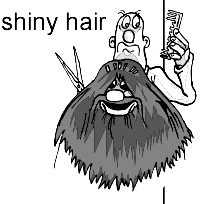 lovely and charming nice and friendly? medium height shortish
lovely and charming nice and friendly? medium height shortish
short / tiny
Does she/he have ...
round / oval / square / heart shaped face
bushy / thick / thin eye- brows
round / almond / narrow / close-set eyes
broad / flat / sharp / button / fake nose
slightly overweight well-built
heavily built
of average build slim
thin / skinny / bony tall
short?
nice shapely legs firm belly muscles
lovely figure
Is she/he
thin
full / thin / well-defined lips
broad smile / charming smile healthy / damaged teeth /braces
wrinkles / freckles / pimples / smooth skin moustache / beard ?
 Does she/he have…
Does she/he have…
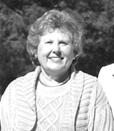 | 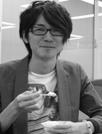 | ||
thick/rich/strong
/healthy/shiny hair thin hair/receding hair
straight/wavy/curly hair spiky hair
fringe
colored / dyed hair
pigtails / ponytail / braids / bun / dreads long / short / shoulder-length?
17. Play a game! Think a person in your class. Describe him/her so that the other people can guess. Use the vocabulary from the previous exercise.
18. Take a partner of the other sex or find a pic- ture of your favorite artist/ actress etc. Imagine you would have a baby. What traits would you pass him?
brella up.
10) It. The ground is wet.
11) Thank you very much. You needn't give me a lift, but it's very kind.
12) Youme a lift, but it was very kind.
13) He needn't collect me from the station. I'll walk.
14) Heme from the station. I walked.
15) Why don't you take the exam? You might pass.
16) Why didn't you take the exam? You.
17) He should stop smoking before it's too late.
18) Hestop smoking before it was too
late.
19) I could visit you next Sunday.
19. Remember Modal verbsand its equivalents. Finish the second sentence with the same idea like in
20) I ask me?
you last Sunday. Why didn’t you
the first. Mind that sometimes you need the other mo-
dal verb!
1) She can ski really well.
2) Shereally well when she was five.
3) I can finish it by Friday but it won't be easy.
4) Iit by Friday but it wasn't be easy.
5) John can't live here. It's the wrong street.
21) There's the phone. It'll be Paul.
22) Did he have a deep voice? ItPaul.
23) He'll sit in the armchair for hours, staring into space.
24) Hein the armchair for hours, staring into space.
6) Shakespeare built until 1840.
in that house. It wasn't
25) Let's take the map. We may get lost.
26) I wonder where they are. They.
7) I must check the oil before we leave.
8) Icheck the oil before we left.
9) It must be raining. Everyone has their um-
20. Fill in the gaps with the verbs could, may, must, have to, shouldand the appropriate infinitive.
1) Einstein’s theory predicted that the universe это самому. 8) В чужой стране необходимо
was not static, but contracting.
(be) either expending or
приспосабливаться (adapt oneself) к новым ус- ловиям жизни. 9) Зря ты купил это пальто. 10)
2) Because the universe is expanding it Мы, должно быть, не заметили его в этой
(cool), which means that it when it was young.
(be) much hotter
толпе (crowd). 11) Нам не надо было спешить, поэтому мы решили пойти пешком.
3) Therefore, a significant fraction of the universe (consist) of non-baryonic matter.
4) There were no longer free electrons to ab- sorb and scatter light, and photons (travel) freely through the universe.
12)Почему я должен это делать?
22. Read the text and translate.
GM Food
5) These fluctuations (cause) by
something that happened even earlier.
6) We , however, (be) careful about taking these models too seriously; they all (be) wrong.
21. Translate into English using modal verbs.
1) Тебе следовало позвонить ему вчера.
2) Ему не следовало говорить с ней таким то- ном (tone). Его тон, должно быть, и обидел (hurt) ее. 3) Это должно было произойти. Всем известна его забывчивость (forgetfulness). 4) Она должна была выяснить все до того, как начинать работу. Теперь ей нужно многое переделывать. 5) Ей следовало принести все документы давным-давно. Те- перь слишком поздно. 6) Детям нельзя смот- реть фильмы ужасов.7) Мне их проводить (see off)? — Нет, не нужно. Мне придется сделать
One of the best-known and controversial appli- cations of genetic engineering is the creation of genetically modified food. There are three generations of genetically modified crops. First generation crops have been commercialized and most provide protec- tion from insects and/or resistance to herbicides. There are also fungal and virus resistant crops devel- oped or in development. They have been developed to make the insect and weed management of crops easier and can indirectly increase crop yield.
The second generation of genetically modified crops being developed aim to directly improve yield by improving salt, cold or drought tolerance and to increase the nutritional value of the crops. The third generation consists of pharmaceutical crops, crops that contain edible vaccines and other drugs. Some agriculturally important animals have been geneti- cally modified with growth hormones to increase their size while others have been engineered to express
drugs and other proteins in their milk.
The genetic engineering of agricultural crops can increase the growth rates and resistance to different diseases caused by pathogens and parasites. These modified crops would also reduce the usage of chemi- cals, such as fertilizers and pesticides, and therefore decrease the frequency of the damages produced by these chemical pollution.
Ethical and safety concerns have been raised around the use of genetically modified food. A major safety concern relates to the human health implica- tions of eating genetically modified food, in particular whether toxic or allergic reactions could occur. Gene flow into related non-transgenic crops, off target ef- fects on beneficial organisms and the impact on biodiversity are important environmental issues. Ethi- cal concerns involve religious issues, corporate con- trol of the food supply, intellectual property rights and the level of labeling needed on genetically modified products.
23. Study this text and enlarge it with your knowledge about genetically modified food.
24. Search the Internet and find all new GM findings: foods and animals and so on. Present then to your class.
25. Read the text about GM food and translate it close to the text.
Генетически модифицированные организмы создаются методами генной инженерии - науки, которая позволяет вводить в геном растения, жи- вотного или микроорганизма фрагмент ДНК из любого другого организма с целью придания ему определенных свойств. Например, томаты полу- чили ген морозоустойчивости от арктической камбалы, картофель получил ген бактерии, чей яд смертелен для колорадского жука, рис получил ген человека, отвечающий за состав женского мо- лока, который делает злак более питательным.
Экспериментальное создание генетически модифицированных организмов началось еще в 70-е годы XX века. С этого времени производство ГМП набирало обороты и сейчас мы можем встретить ГМ сою, кукурузу, рис, картофель, по- мидоры, рапс, сахарную свеклу, пшеницу, горох, подсолнечник, папайю, хлопок, табак, коров с по- вышенной жирностью молока, лосося, который может жить как в соленой, так и в пресной воде и многих других организмов.
Неконтролируемое потребление генетически модифицированных продуктов может иметь не- предсказуемые последствия в будущем. Чтобы полностью понять все риски употребления в пищу трансгенных продуктов, должно пройти несколько десятков лет и смениться несколько поколений, питавшихся ГМП.
Но нельзя говорить со стопроцентной уве- ренностью о вреде всех трансгенных продуктов. И в природе существуют организмы, непригодные в пищу для человека (ядовитые и мутагенные). Че- ловек сам вправе выбирать, как жить и чем пи- таться. Главное, чтобы этот выбор был осознан- ным и основывался на научно доказанных фактах, а не на слухах.
26. Create the project “Genetically modified food”. Choose the product you want to create and qualities you can endow your GM product. What are they? Where can you take them from? Make a poster of your product and tell about the procedure you made to create such unique GM product.
27. Write a ‘for-and against’ essay about pluses and minuses of
- creating GM product.
- 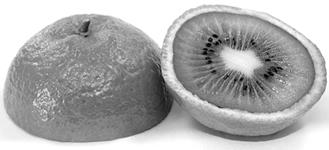 using GM food.
using GM food.
Unit 18 Stem cells
What does a “stem cell” mean? Can you use it in a sentence?
Do you know how stem cell is used in treatment of different diseases?
Are stem cells used nowadays? How?
1. Read this text and compare your idea of stem cells and the one given below.
Our future hope?
Stem cells are cells found in most, if not all, multi- cellular organisms. They are characterized by the abil- ity to renew themselves through mitotic cell division and differentiating into a range of specialized cell types. Research in the stem cell field grew out of find- ings by Canadian scientists Ernest McCulloch and James Till in the 1960s.
The two types of mammalian stem cells are: em- bryonic stem cells that are found in blastocysts, and adult stem cells that are found in adult tissues. In a de- veloping embryo, stem cells can differentiate into all of the specialized embryonic tissues. In adult organ- isms, stem cells and progenitor cells act as a repair system for the body, replenishing specialized cells, but also maintain the normal turnover of regenerative or- gans, such as blood, skin or intestinal tissues.
To ensure self-renewal, stem cells undergo two types of cell division. Symmetric division gives rise to two identical daughter cells both endowed with stem cell properties. Asymmetric division, on the other hand, produces only one stem cell and a progenitor cell with limited self-renewal potential. Progenitors can go through several rounds of cell division before terminally differentiating into a mature cell. It is pos- sible that the molecular distinction between symmetric and asymmetric divisions lies in differential segrega- tion of cell membrane proteins (such as receptors) be- tween the daughter cells.
Stem cells can now be grown and transformed into specialized cells with characteristics consistent with cells of various tissues such as muscles or nerves through cell culture. However, their use in medical therapies has been proposed.
The classical definition of a stem cell requires that it possess two properties:
Self-renewal - the ability to go through numerous cycles of cell division while maintaining the undiffer- entiated state.
Potency - the capacity to differentiate into special- ized cell types.
Properties of stem cells can be illustrated in vitro, using methods such as clonogenic assays, where sin- gle cells are characterized by their ability to differenti- ate and self-renew. As well, stem cells can be isolated based on a distinctive set of cell surface markers. However, in vitro culture conditions can alter the be- havior of cells, making it unclear whether the cells
will behave in a similar manner in vivo. Considerable debate exists whether some proposed adult cell popu- lations are truly stem cells.
Medical researchers believe that stem cell therapy has the potential to dramatically change the treatment of human disease. A number of adult stem cell thera- pies already exist, particularly bone marrow trans- plants that are used to treat leukemia. In the future, medical researchers anticipate being able to use tech-
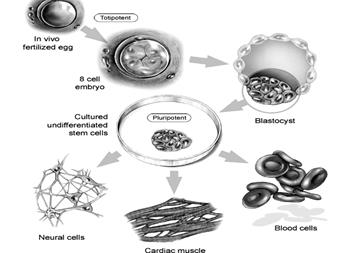 |
nologies derived from stem cell research to treat a wider variety of diseases including cancer, Parkinson's disease, Alzheimer’s disease, spinal cord injuries, Amyotrophic lateral sclerosis and muscle damage, amongst a number of other impairments and condi- tions. However, there still exists a great deal of social and scientific uncertainty surrounding stem cell re- search, which could possibly be overcome through public debate and future research, and further educa-
tion of the public.
Notes
marrow mature potency progenitor
similar spinal cord surface surround (v)
* Cancer - a disease in which cells in the body grow without control, or a serious medical condition caused by this disease.
*Alzheimer's (disease) - a disease that results in the gradual loss of memory, speech, movement, and the ability to think clearly, and that is common esp. among older people.
property propose (v) protein renew (v) self-renewal set
therapy tissue transform (v) turnover uncertainty undergo (v)
* Parkinson's disease - is a degenerative disorder of the central nervous system that often impairs the sufferer's motor skills, speech, and other functions.
* Amyotrophic lateral sclerosis - a progressive, usually fatal, neurodegenerative disease caused by the degeneration of motor neurons, the nerve cells in the central nervous system that control voluntary muscle movement.
Vocabulary
2. Translate into English.
1) Терапия взрослыми стволовыми клетками
активно используется для лечения лейкемии.
2) Способности стволовых клеток часто де- монстрируют в пробирке, используя методы кле- точного анализа.
3) Ученые наблюдали за стволовыми клетка- ми в пробирке и сделали вывод, что найденные по- врежденные стволовые клетки переходят в рако- вые клетки.
4) Многие ученые обещают, что через не-
act (v)
adult stem cells assay
capacity cycle derive (v) disease distinction division
embryonic stem cells endow (v)
exist (v) finding impairment in vitro
in vivo injury mammalian
сколько десятков лет стволовыми клетками можно будет вылечить почти все болезни человека.
5) Существуют различия в жизненных циклах
разных клеток.
6) Эмбриональные стволовые клетки способ- ны к делению, тем самым они восстанавливают те стволовые клетки, которые погибли или были ис- пользованы.
7) У взрослых организмов стволовые клетки и
клетки предшественники выступают в качестве ремонта системы для тела, пополнение специали- зированных клеток и поддержание нормальной ре- генеративности органов, например, крови, кожи или кишечной ткани.
8) В естественных условиях стволовые клет- ки, возможно, ведут себя не так как в пробирке.
9) В будущем врачи смогут лечить поврежде- ния спинного мозга.
10) Стволовые клетки млекопитающих бы- вают двух типов.
11) Чтобы обеспечить самообновление ство- ловые клетки подвергаются делению.
12) В настоящее время стволовые клетки ис- пользуются в терапии.
13) В исследовании стволовых клеток есть еще много неопределенностей.
14) Трансплантация спинного мозга использу- ется в лечении лейкемии.
15) Сальные железы выделяют свой секрет на
поверхность кожи.
16) Мышечная ткань обеспечивает двига- тельную активность животного организма.
17) Стволовые клетки обладают свойствами
самообновления.
18) Каждая клетка обладает определенным
набором генов.
19) В результате симметричного деления об- разуются две похожие клетки.
20) Костный мозг вырабатывает форменные элементы крови.
21)Стволовые клетки в процессе клеточного деления дифференцируются в зрелые клетки.
22) Потенциал – способность дифференциро- ваться в различные типы клеток.
23) Клетки предшественники могут пройти несколько этапов клеточного деления.
24) Свойства стволовых клеток можно про- иллюстрировать методом клоногенного анализа.
3. Give definitions of the following notions:
1) Stem cells
2) Embryonic stem cells
3) Adult stem cells
4) Symmetric division
5) Asymmetric division
6) Self-renewal
7) Potency
4. Answer the questions according to the text.
1) What ability do stem sells have?
2) Who was the first investigator of stem cells?
3) What are the types of mammalian stem cells?
4) How do stem cells and progenitor cells act in adult organisms?
5) What types of cell division do you know? What is the difference between them?
6) How can stem cells be grown and trans- formed?
7) What are the properties of stem cells?
8) What is the method of clonogenic assay?
not?
9) Will stem cell therapy cure many diseases or
10) Are there any existing adult stem cell thera-
8. Study the Complex Object. Open the brackets and use the Complex Object.
Example: He expected (they, arrive) at 5. — He
pies?
11) Are all people sure about the necessity of stem sells research?
5. Read the text again and entitle it.
6. Be ready to speak about stem sells. Use this text and enlarge it with your new information.
7. Remember the use and forms of the Infinitive. Open the brackets and choose the Infinitive in the Ac- tive or Passive Voice.
1) They are glad (invite/be invited) to the party.
2) I don't like (interrupt/be interrupted). 3) He will be happy (see/be seen) you. 4) I was glad (meet/be met) at the station. 5) Children like (tell/be told) tales and always (listen/be listened) to them with interest. 6) I did not think (interrupt/be interrupted) you. 7) He is glad (send/be sent) abroad. 8) He likes (ask/be asked) his professor questions.9)He does not like (ask/be asked) questions because he does not know how to an- swer them. 10) Be careful with him. He is a very re- sentful person. He can't bear (joke/be joked at). 11) He does not like (laugh/be laughed) at other people. 12) Look, a ship can (see/be seen) in the distance. Can you (see/be seen) it?
expected them to arrive at 5.
1) Do you want (they, stay) at the hotel or with us? 2. I'd like (the professor, look through) my report.
3) Do you want (I, show) you the sights of the city? 4) We expect (he, arrange) everything by the time we come. 5) I want (she, tell) me the news in brief. 6) He expected (the meeting, hold) in the Red Room. 7) I would like (they, fix) an appointment for me for Tues- day. 8) We want (she, introduce) us to the president.
9) I don't want (they, be late) for dinner. 10) He ex- pected (she, invite) to the party by the Smiths. 11) I'd like (the dress, buy) by Saturday. 12) I don't want (she, treat) like Alice. 13) We considered (he, be) an honest person. 14) I don't like (she, prevent) me from doing it. 15) I suspect (he, help) by her.
9. Translate into English using the Complex Ob-
ject.
1) Я не ожидал, что этот полицейский будет таким невежливым (impolite) человеком. 2) Мы бы хотели, чтобы вы доставили (deliver) товары к концу июня. 3) Я ожидал, что ее пригласят туда. 4) Они не ожидали, что его спросят об этом. 5) Я слышал, как его имя несколько раз упоминалось на собрании. 6) Он не заметил, как мы подошли к нему. 7) Вы видели, как они над чем-то смеялись?
8) Мы не ожидали, что об этом объявят (announce)
по радио. 9) Мне бы хотелось, чтобы она сказала
нам, что она будет делать сегодня вечером. 10) Я думаю, что сегодня вы услышите, как она поет. 11) Когда он услышал, что его сын плачет, он встал и пошел в детскую комнату (nursery). 12) Я бы хо- тел, чтобы никто не брал мои вещи.
10. Study this stem cell research vocabulary. Match the words in column A with the best choice in column B.
a. technique q. use
b. embryo r. exaggerate
c. single s. therefore
d. employ t. method
e. implant u. hurt
f. admit v. one
g. hence w. moral
h. ethical x. tell
i. harm y. baby
j. overstate z. insert
11. Fill in the blank with the correct word. Choose them out of the words in the box:
2) They took a single cell from an eight-cell hu- man (…).
3) The removal of a (…) cell isn't a new.
4) It has been (…) in fertility clinics to test for diseases.
5) Doctors and fertility specialists do this before the embryo is (…) in the womb.
6) ACT, Inc. later (…) that scientists removed more than a single cell.
7) (…) the embryos were destroyed.
8) The new process left no embryos alive, and solves no (…) problem.
9) Some U.S. Senators also criticized the experi- ment, because the company (…) the field.
10) By (…) their results, ACT, Inc. hurt stem cell research.
12. Find the words from the previous exercise in the following table. Time yourself, and see how many words you can find in three minutes.

1) Researchers at Advanced Cell Technology (ACT), Inc. have found a new (…) to gather stem cells.
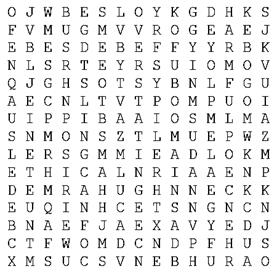
13. Read the text and underline the words you found in the exercises before.
